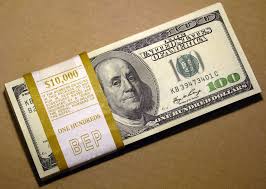
While you were employed, you diligently put away money into your employer sponsored 401(k) plan so that the money would be there for you to use when you retired. Now, that you are unemployed, you wonder “Can I could use some of that money for my immediate needs, like mortgage payments and purchasing groceries?” The answer is yes, but unless you meet certain criteria and follow particular rules, withdrawing money from your 401(k) account can be costly. If you are facing an immediate financial need, you may qualify for a 401(k) plan hardship withdrawal that will allow you to obtain the money that you need without significant fees and penalties.
Qualifying Expenses
A 401(k) hardship withdrawal is a distribution from a 401(k) plan based on an immediate, costly financial need by the account holder, their spouse, or their dependent and you can only obtain the amount of money needed to satisfy that financial need. Qualifying expenses typically include certain types of medical expenses; burial or funeral expenses; costs related to the purchase of a principal residence; costs related to preventing foreclosure on a principal residence; and tuition or other related educational fees. Not all plans allow hardship withdrawals and they are not required by the federal government, so you will need to read the information for your plan to see if what types of withdrawals will be allowed.
Additional Details
While not as expensive as just withdrawing all of your funds from your 401(k) account, the amount that you obtain under a hardship withdrawal will be subject to a 10% withdrawal penalty, taken directly from the amount disbursed by the plan. You may also face a tax penalty when you file your income taxes for the year. After obtaining a hardship withdrawal, you cannot make any contributions into the plan for the following six months. All of these things must be taken into consideration when deciding whether to obtain a hardship withdrawal from your 401(k) plan.
Obtaining The Hardship Withdrawal
If you have decided that obtaining a hardship withdrawal is your best course of action, then you will need to provide documentation to the plan administrator detailing your need and demonstrating hardship. The specific documentation needed will vary from plan to plan and based on the type of need, but the account holder must generally demonstrate that they have an immediate and costly financial need that cannot be relieved with other resources. If a review of the information provided determines that you qualify for a hardship disbursement from your 401(k) plan, you will be notified by the plan administrator and the funds will be released to you by check or by a deposit into your bank account.
